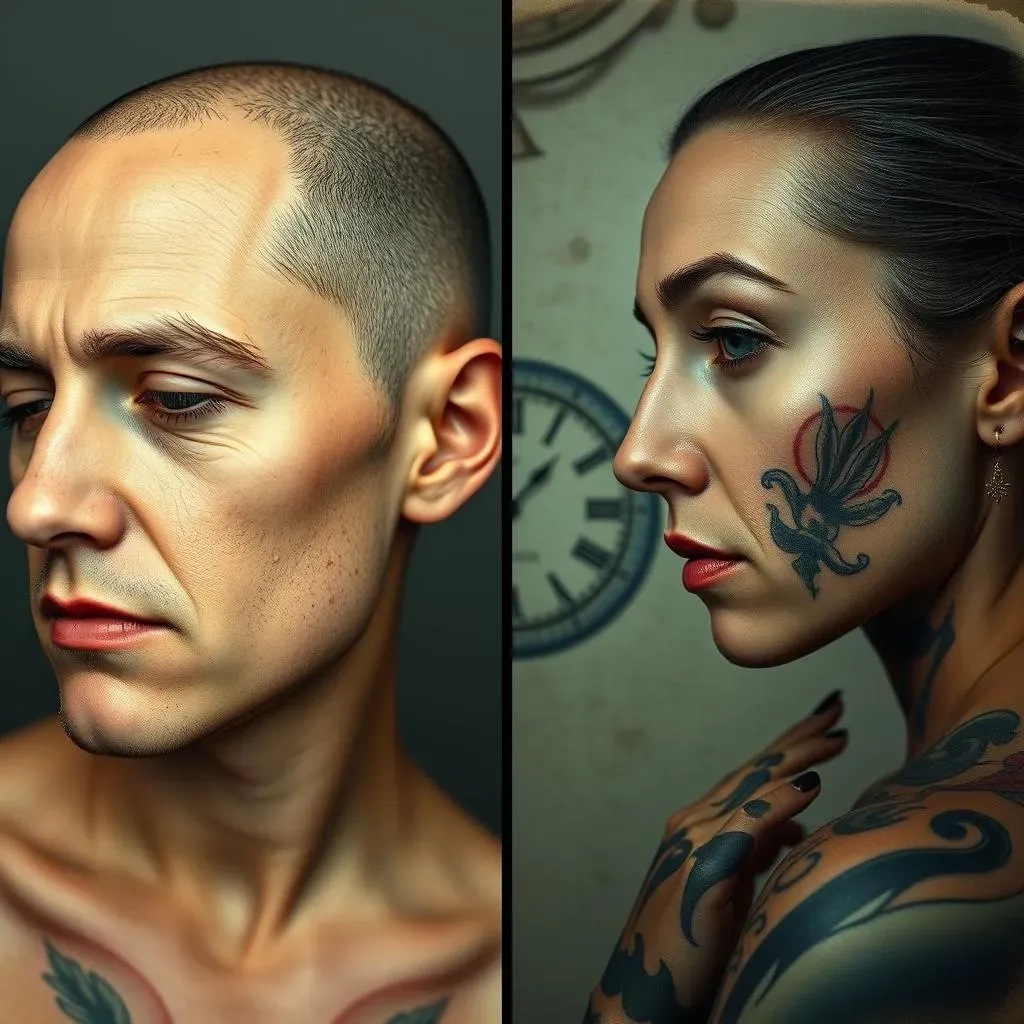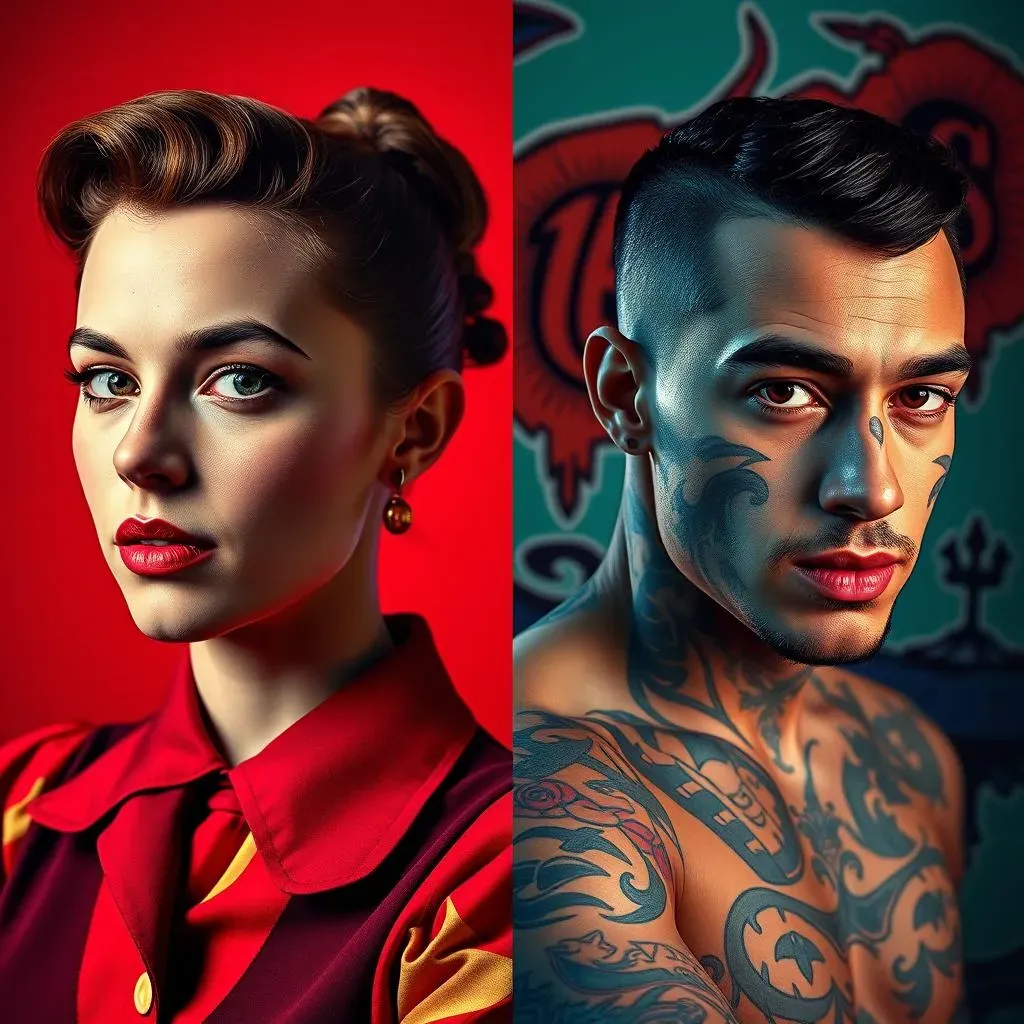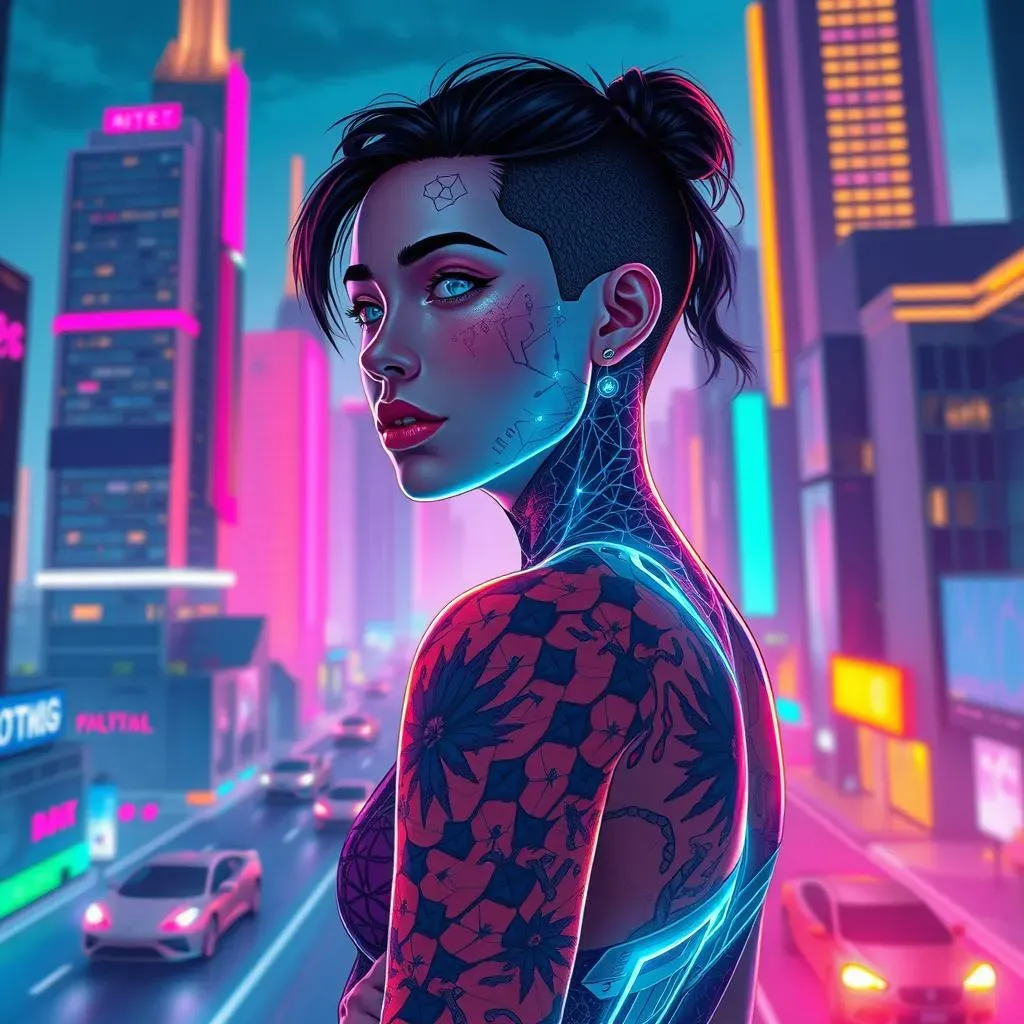Table of Contents
In a world where self-expression reigns supreme, body art has taken center stage. But the question lingers: are tattoos fashionable, or are they a fleeting trend destined to fade into obscurity? Once relegated to the fringes of society, tattoos have exploded into mainstream culture, adorning everyone from celebrities to soccer moms. But with such widespread popularity, are we witnessing the peak of tattoo fashion, or is this just the beginning? This article dives deep into the ever-evolving world of ink, exploring current trends, timeless styles, and the potential pitfalls of impulsive decisions. We'll examine how tattoos have transformed from rebellious statements to fashionable accessories and consider what the future holds for this captivating art form. Get ready to explore which tattoo styles stand the test of time, how to dodge tattoo regrets, and the fascinating social forces that have propelled tattoos into the fashionable spotlight. Let's unravel the intricate tapestry of tattoo culture and discover whether these permanent markings are truly a lasting expression of style.
The EverEvolving Tattoo Trend: Are Tattoos Still Fashionable?
The EverEvolving Tattoo Trend: Are Tattoos Still Fashionable?
The Rise of Tattoo Culture
Remember when tattoos were mostly associated with sailors and rebels? Now, they're everywhere! From delicate micro-tattoos to sprawling sleeves, ink has infiltrated every corner of society. This shift isn't just about aesthetics; it reflects a deeper cultural change. People are increasingly embracing individuality and self-expression, and tattoos offer a powerful way to tell their stories. The rise of social media has also played a huge role, showcasing diverse styles and artists to a global audience.
But with this surge in popularity comes a critical question: are tattoos losing their edge? Are they becoming so mainstream that they're losing their rebellious appeal? It's a valid concern, but I think the answer is more nuanced. While some trends may fade, the core desire to express oneself through body art remains strong. Tattoos are evolving, adapting to new aesthetics and cultural shifts, and that's what keeps them relevant.
Fashion Statement or Personal Expression?
This is the million-dollar question, right? Are people getting tattoos because they genuinely connect with the art, or are they just chasing the latest trend? Honestly, it's probably a mix of both. Some folks see tattoos as a fashion accessory, carefully selecting designs that complement their personal style. Others view them as deeply personal symbols, commemorating important events, relationships, or beliefs. And then there are those who simply love the art form and appreciate the skill and creativity of the tattoo artist.
Here's my take: there's no right or wrong reason to get a tattoo, as long as you're doing it for yourself. If you're getting a trendy design just because everyone else is doing it, you might regret it later. But if you choose a design that resonates with you on a personal level, it's more likely to remain meaningful, regardless of whether it's "in" or "out" of fashion.
Predicting the Future of Tattoo Trends
So, what's next for tattoo fashion? Predicting the future is always tricky, but we can look at current trends for clues. Minimalism is still going strong, with delicate line work and geometric designs remaining popular. We're also seeing a rise in personalized tattoos, incorporating elements that are unique to the individual. Think custom portraits, handwritten quotes, or abstract designs that represent personal experiences.
Technology is also playing a role, with new inks and techniques pushing the boundaries of what's possible. We might see more interactive tattoos in the future, incorporating augmented reality or other digital elements. The possibilities are endless! Ultimately, I believe the future of tattoos lies in embracing individuality and pushing creative boundaries. As long as people continue to seek meaningful ways to express themselves, tattoos will remain a relevant and evolving art form.
- Minimalism: Delicate lines and simple shapes
- Personalized Tattoos: Custom designs reflecting individual stories
- Technological Advancements: Interactive tattoos and innovative inks
Tattoo Styles That Are Always in Fashion
Tattoo Styles That Are Always in Fashion
Timeless Tattoo Designs
Alright, let's talk about the classics! Some tattoo styles just never go out of fashion. Think traditional Americana – bold lines, vibrant colors, and iconic imagery like eagles, roses, and anchors. These designs have been around for decades and continue to be popular for a reason. They're timeless, visually striking, and carry a certain sense of history and nostalgia. If you're looking for a tattoo that will still look good in 50 years, you can't go wrong with a classic design.
Another style that consistently ranks high is Japanese traditional tattooing, also known as Irezumi. Characterized by intricate designs, mythical creatures, and a rich symbolism, Irezumi is a true art form. While full body suits are less common these days, smaller Japanese-inspired pieces are still highly sought after. The flowing lines, vibrant colors, and profound meanings behind these tattoos make them enduringly fashionable.
Enduring Themes and Motifs
Beyond specific styles, certain themes and motifs also tend to stand the test of time. Think about nature-inspired tattoos – flowers, trees, animals – these are all enduringly popular choices. They're versatile, can be adapted to different styles, and resonate with people on a fundamental level. A delicate floral piece or a majestic animal portrait is unlikely to ever look dated.
Geometric and abstract designs are also surprisingly timeless. While specific geometric patterns may come and go, the underlying principles of balance, symmetry, and clean lines remain eternally appealing. A well-executed geometric tattoo can be both visually striking and deeply meaningful, making it a fashionable choice for years to come.
Tattoo Style | Key Characteristics | Why It's Timeless |
|---|---|---|
Traditional Americana | Bold lines, vibrant colors, classic imagery | Nostalgia, visual impact, historical significance |
Japanese Traditional (Irezumi) | Intricate designs, mythical creatures, rich symbolism | Artistic complexity, profound meaning, cultural heritage |
Nature-Inspired | Flowers, trees, animals | Versatility, universal appeal, connection to nature |
Geometric/Abstract | Balance, symmetry, clean lines | Visual appeal, potential for deeper meaning, adaptability |
When Tattoos Go Wrong: Avoiding Fashion Faux Pas
When Tattoos Go Wrong: Avoiding Fashion Faux Pas
Trendy Today, Regretted Tomorrow?
Let's be real, not all tattoos age gracefully. What's hot right now might be cringeworthy in a few years. Remember tribal armbands from the early 2000s? Or those barbed wire tattoos? Yeah, exactly. The key is to avoid jumping on trends without considering the long-term implications. A tattoo is (usually) forever, so choose designs that have personal meaning and aren't just a reflection of a fleeting fad. Think about it: will you still love that trendy quote or cartoon character when you're 60? Probably not.
Another common mistake is getting a tattoo that's poorly executed. A shaky line, a misspelled word, or a muddy color palette can turn a potentially awesome design into a disaster. That's why it's crucial to research your artist and choose someone with a solid portfolio and a style that matches your vision. Don't be afraid to ask questions, look at their previous work, and read reviews. A good artist will be happy to discuss your ideas and offer suggestions to ensure you get a tattoo you'll love for years to come.
Location, Location, Location!
Where you place your tattoo is just as important as the design itself. Some body parts are more prone to fading, stretching, or distortion over time. Fingers, hands, and feet, for example, tend to fade quickly due to frequent washing and exposure to the elements. Areas that experience significant weight fluctuations, like the stomach or upper arms, can also cause tattoos to stretch and lose their shape. Consider how your body might change over time and choose a location that will minimize the risk of distortion.
Also, think about your professional life. While tattoos are becoming more accepted in the workplace, some industries still have strict policies. A highly visible tattoo on your face or neck might limit your career options, so it's important to weigh the pros and cons before committing to a placement. Ultimately, the best location for your tattoo is one that you're comfortable with and that aligns with your lifestyle and goals.
The Cover-Up Conundrum
so you've got a tattoo you regret. What now? Cover-ups are an option, but they're not always easy. Covering an existing tattoo requires a skilled artist who can create a new design that effectively masks the old one. Darker colors are generally easier to cover, but the size and complexity of the original tattoo can also limit your options. Laser tattoo removal is another possibility, but it can be expensive, time-consuming, and painful. Plus, it doesn't always completely erase the tattoo.
The best way to avoid the cover-up conundrum is to carefully consider your tattoo choices in the first place. Do your research, choose a reputable artist, and select a design that you'll love for years to come. Remember, a tattoo is a permanent commitment, so it's worth taking the time to make sure you're making the right decision.
Mistake | Consequence | Prevention |
|---|---|---|
Following fleeting trends | Regret, outdated design | Choose timeless designs with personal meaning |
Poor execution | Shaky lines, misspelled words, muddy colors | Research your artist, check their portfolio |
Unsuitable location | Fading, stretching, distortion | Consider body changes and professional implications |
Impulsive decision | Regret, cover-up or removal | Take your time, plan carefully |
The Social and Cultural Impact: How Tattoos Became Fashionable
The Social and Cultural Impact: How Tattoos Became Fashionable
From Subculture to Pop Culture
so how did tattoos go from being a mark of rebellion to a mainstream fashion statement? It's a fascinating journey! For decades, tattoos were largely confined to specific subcultures – sailors, bikers, convicts, and members of various underground movements. They were a way to signal belonging, to defy societal norms, and to express a sense of identity outside the mainstream. But as these subcultures gained visibility, their symbols and aesthetics began to seep into popular culture. Musicians, artists, and other cultural icons started sporting tattoos, challenging traditional notions of beauty and respectability. This gradual infiltration paved the way for tattoos to become more widely accepted and even admired.
Think about it: early rock and roll icons like Elvis Presley and Janis Joplin sported visible tattoos, challenging the clean-cut image of the 1950s. As rock music became more mainstream, so did its associated symbols, including tattoos. The punk rock movement of the 1970s further amplified this trend, embracing tattoos as a form of anti-establishment expression. These cultural shifts gradually eroded the stigma surrounding tattoos, making them more palatable to the general public.
The Role of Media and Celebrities
The media has played a massive role in normalizing tattoos. From magazine covers to reality TV shows, inked bodies are now a ubiquitous sight. Celebrities, in particular, have been instrumental in popularizing tattoo culture. When A-listers like Angelina Jolie, David Beckham, and Rihanna proudly display their tattoos, they send a message that body art is cool, fashionable, and even aspirational. Their choices influence millions of people around the world, inspiring them to explore their own self-expression through tattoos.
But it's not just about celebrities getting tattoos; it's also about the way tattoos are portrayed in the media. Gone are the days when tattoos were exclusively associated with criminals or outcasts. Today, we see tattooed characters in movies, TV shows, and advertisements, often depicted as strong, independent, and successful individuals. This positive representation has helped to reshape public perception and make tattoos more appealing to a wider audience.
Tattoos as a Form of Empowerment
Beyond fashion and celebrity influence, tattoos have also become a powerful tool for personal empowerment. Many people use tattoos to reclaim their bodies, to heal from trauma, or to celebrate milestones in their lives. A tattoo can be a tangible reminder of resilience, strength, and self-acceptance. For some, it's a way to take control of their narrative and rewrite their own story. This deeply personal aspect of tattoo culture has contributed to its growing popularity and acceptance.
Consider the rise of mastectomy tattoos, where women who have undergone breast cancer surgery choose to adorn their scars with beautiful and meaningful designs. These tattoos are not just about covering up; they're about transforming a symbol of illness and loss into a celebration of survival and strength. Similarly, many people get tattoos to commemorate loved ones, to honor their heritage, or to express their political beliefs. These tattoos are more than just decorative; they're powerful statements of identity and purpose.
Factor | Impact on Tattoo Fashion |
|---|---|
Subculture Influence | Brought tattoos into the mainstream aesthetic. |
Media Representation | Normalized tattoos and challenged negative stereotypes. |
Celebrity Endorsement | Made tattoos fashionable and aspirational. |
Personal Empowerment | Elevated tattoos to a form of self-expression and healing. |
Future of Tattoos: What's Next in Tattoo Fashion?
Future of Tattoos: What's Next in Tattoo Fashion?
Tech-Infused Tattoos: The Next Frontier
Imagine tattoos that can change color based on your mood, monitor your health, or even interact with your smartphone. Sounds like science fiction, right? But the reality of tech-infused tattoos is closer than you might think. Researchers are developing biocompatible inks that can respond to changes in body temperature, pH levels, or even electrical signals. These "smart tattoos" could have a wide range of applications, from medical monitoring to interactive art. Imagine a tattoo that glows when your blood sugar is low or a design that shifts and changes based on the music you're listening to. The possibilities are truly mind-blowing!
While these technologies are still in their early stages, they represent a significant shift in the way we think about tattoos. No longer just static images, tattoos could become dynamic, interactive extensions of our bodies. This opens up a whole new realm of possibilities for self-expression and personal customization. The future of tattoo fashion may involve blending art, technology, and biology in ways we can only begin to imagine.
Sustainability and Ethical Ink
As awareness of environmental and social issues grows, so does the demand for sustainable and ethical products. The tattoo industry is no exception. People are increasingly seeking out vegan inks, made without animal byproducts, and artists who prioritize eco-friendly practices. This trend reflects a broader cultural shift towards conscious consumerism and a desire to minimize our impact on the planet. The future of tattoo fashion will likely involve a greater emphasis on sustainability, from the sourcing of materials to the disposal of waste.
In addition to environmental concerns, ethical considerations are also gaining traction. People are becoming more aware of the potential for cultural appropriation in tattoo designs and are seeking out artists who respect and understand the origins of different styles. There's a growing emphasis on collaboration and cultural exchange, rather than simply borrowing or imitating traditional designs. The future of tattoo fashion will involve a more nuanced understanding of cultural heritage and a commitment to ethical practices.
Trend | Description | Impact on Tattoo Fashion |
|---|---|---|
Tech-Infused Tattoos | Dynamic inks, health monitoring, interactive designs | Blurs the line between art, technology, and biology |
Sustainable Inks | Vegan, eco-friendly materials | Reduces environmental impact |
Ethical Practices | Respect for cultural heritage, collaboration | Promotes cultural understanding and avoids appropriation |
The Enduring Appeal of Ink: Are Tattoos Fashionable for the Long Haul?
So, are tattoos fashionable? The answer, it seems, is a resounding yes, but with a few caveats. While specific trends may come and go, the underlying desire for self-expression through body art appears to be here to stay. The key is to approach tattoos with thoughtfulness and intention, choosing designs that resonate with your personal style and values rather than blindly following fleeting fads. Whether you opt for a classic design that transcends time or a bold statement piece that reflects your current passions, remember that a tattoo is a permanent commitment. By understanding the history, trends, and potential pitfalls of tattoo culture, you can ensure that your ink remains a fashionable and meaningful part of your story for years to come.